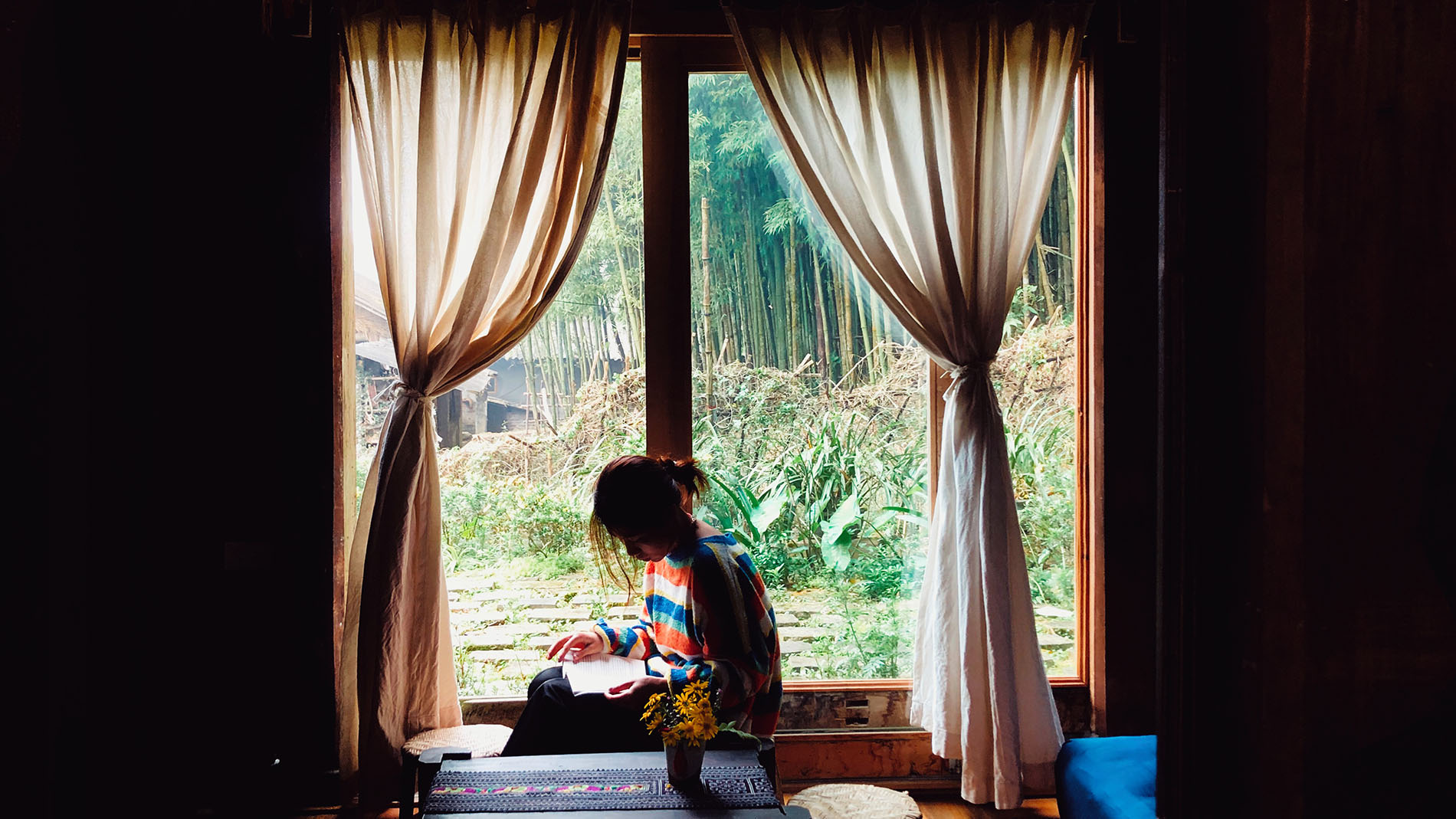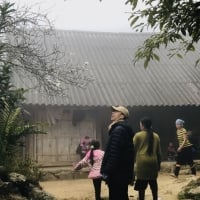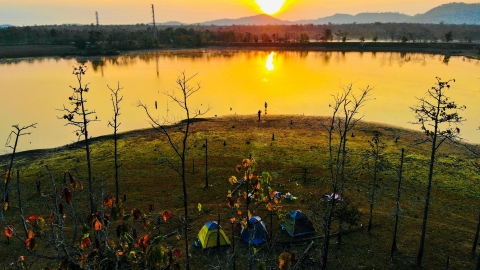The way to "Phieu" house, the homestay without a signboard
Sapa is known as “the town in the clouds”, a place where the mountains are very romantic, and the pace of life of the people is peaceful and slow. Along with the increasing demand for relaxation and “escape”, Sapa has become more bustling than ever. Exactly one year ago, on the way from Hau Thao back to town, when admiring the whole Ta Van valley immersed in the dry sunshine of the last day of the year, we promised each other that we would definitely come back and stay here.
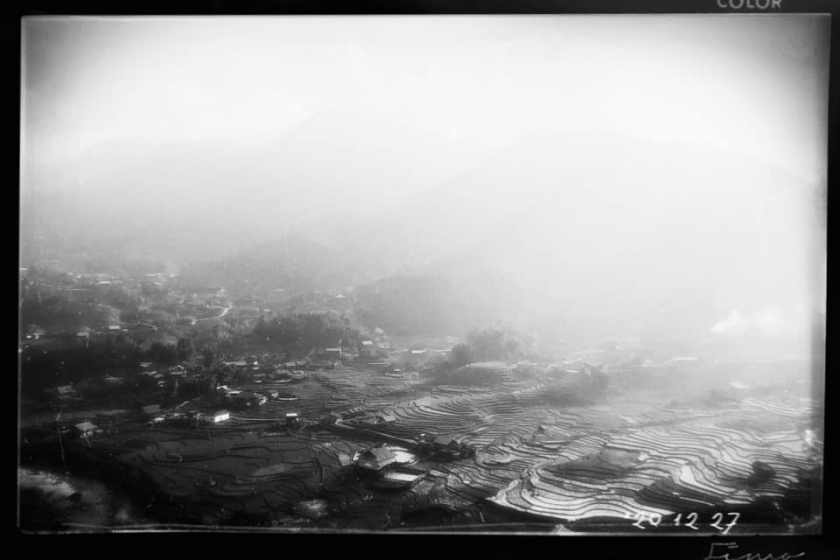
Ta Van, a late winter day in 2020.
“I’ve never seen so many customers like this week, where are all these people coming from?”, two taxi drivers were chatting as we arrived at the bus station early on Saturday. Perhaps, after a long time of “working/studying from home”, everyone wants to move, especially from December to January of the year, the weather in the Northern mountainous region is very suitable for cloud watching and relaxation.
Picking up the car at 4:30 am, we were also given a pair of cotton-lined leather gloves by the bus company as a free gift: “Because Sapa is very cold now, there is a lot of fog and rain this week”. We wandered around until 6 am waiting for gas, also waiting for the frost to clear, then we set off for Ta Van.
From the town center to Pieu's house is about 10 km, the road is steep and winding but not difficult to travel. Some sections of the road are under construction, a bit bumpier. Leaving the town about 2-3 km, not counting the homestays blocking both sides of the cliff, the fog or clouds, lingering on the old pine trees, or falling down to the road, spread in a thin layer, making us both confused and excited. Even though we had traveled this road a few times, that day still found it as mysterious and charming as the first day.

The houses "sleep peacefully" in the early morning.
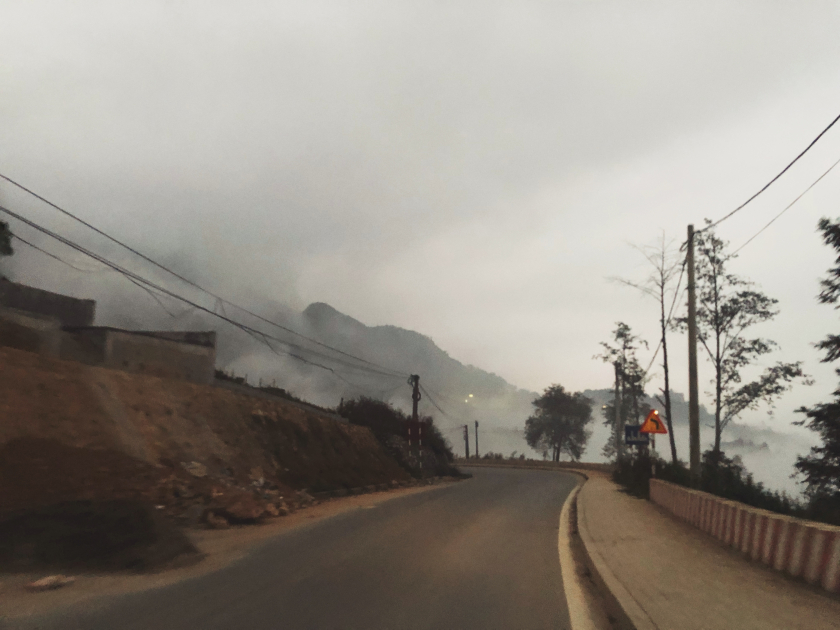
Sapa early morning, clouds drifting on the winding road.
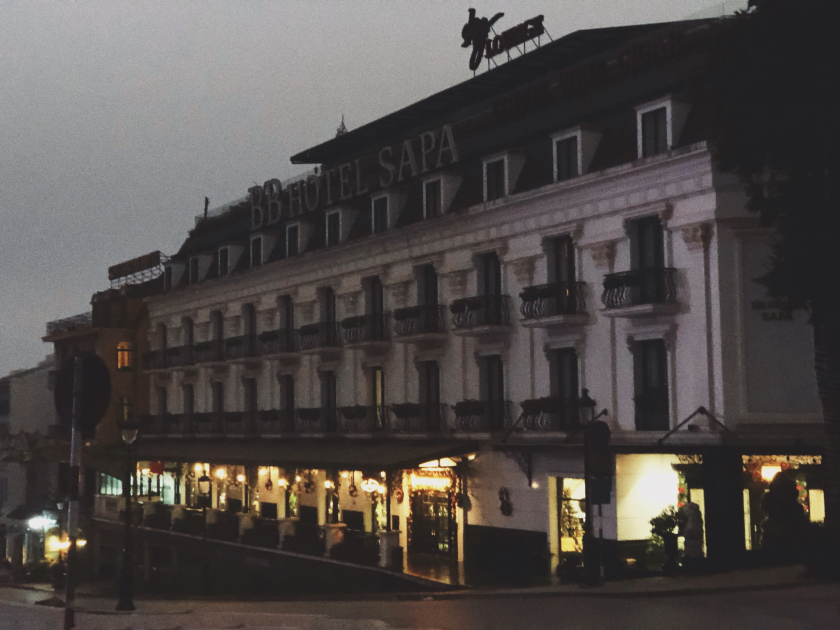
Restaurants and eateries have turned on the lights to welcome guests early.
After passing through many bends and winding slopes to the foot of Hoang Lien Son mountain, we could see the red suspension bridge over Muong Hoa stream. Crossing this bridge, the road to Pieu was very close. Because it was the end of winter, we were not lucky enough to see the bright purple rhododendron flowers mixed with the dull gray of the reeds, as the villagers had said. Following the shared GPS directions, our car stopped in front of a wooden house with a golden chrysanthemum porch. The house had no nameplate, was not noted as a homestay, or had any signs such as a large wooden gate, a large yard with many meticulously decorated tables and chairs, etc. The house was located at the foot of a vast green bamboo forest, simple and quiet like many Mong houses in the village, so we just stood hesitantly in front of the door, until the housekeeper in the kitchen turned on the light, the glass door frame became the only signal to inform us that we were on the right path.
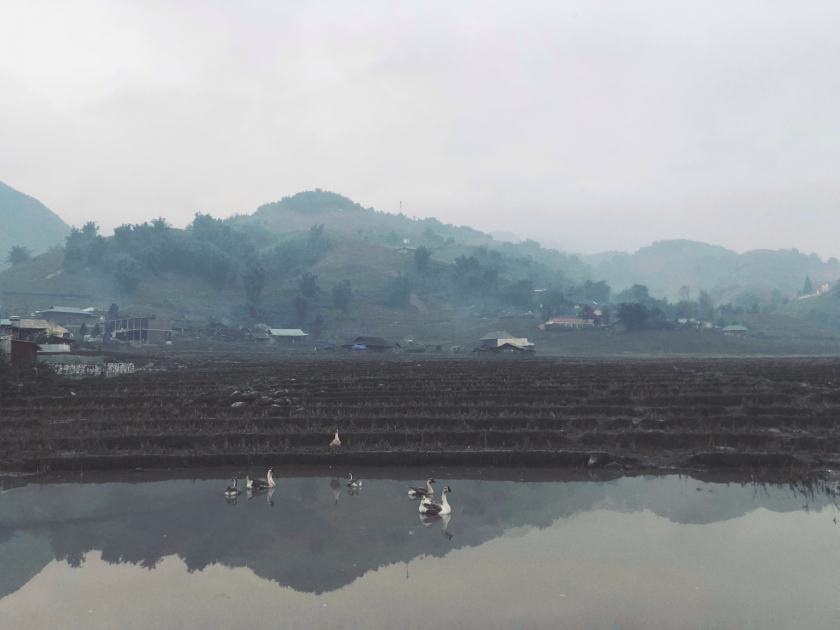
7am in Ta Van Giay, the sky is still cloudy.

The slope in front of Pieu's house.
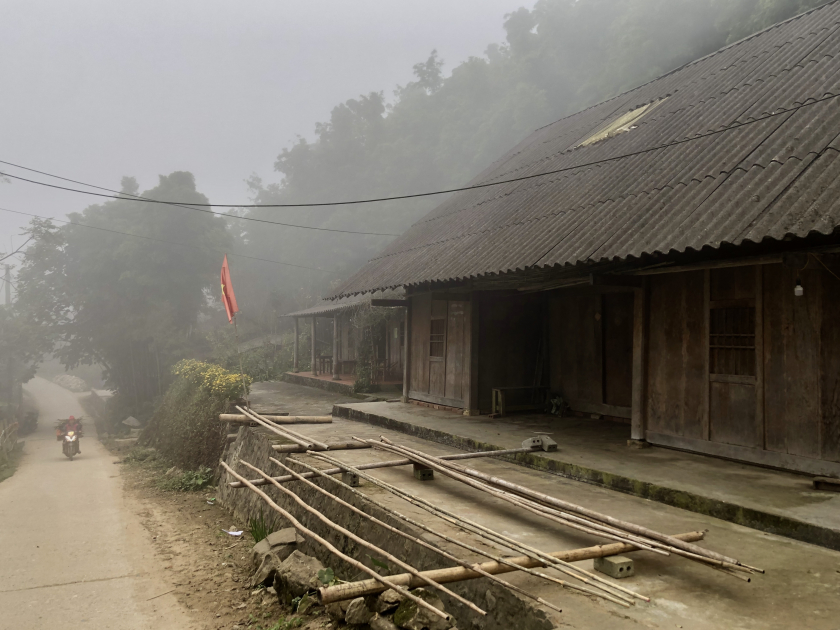
The house lies silent in the mist, no sign, no name.

The way home when the sky was clear, at noon.
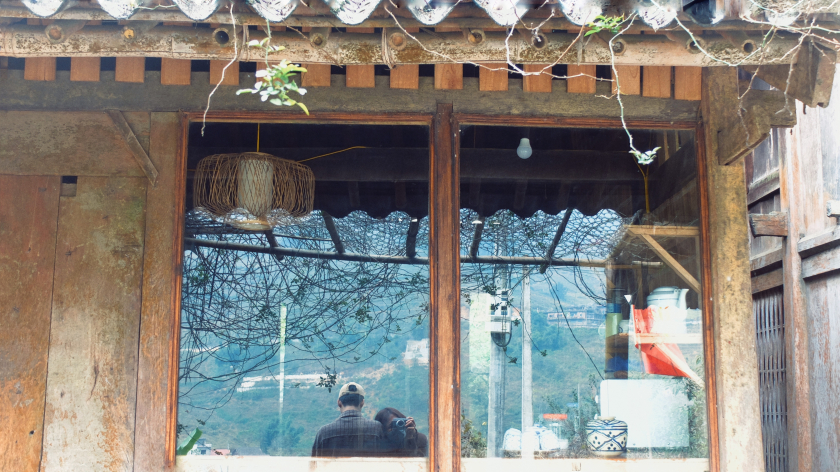
The only thing that makes the house different from the outside is the large glass window of the kitchen.
The Little House in the Mist - Where Time Is Indefinite
At this time, Sapa is drizzling and foggy. Lying on the attic looking out, the sky is always gray, you can’t see the dawn, and you don’t know when the sun will set. Usually, only a few hours from noon until early afternoon, when the sun is shining, we take the opportunity to go out and wander around. The two of us listened to Sigur Rós’s Ekki múkk over and over again, and then decided not to look at the clock, just let nature take its course: when hungry, cook, when thirsty, drink tea, when bored, take a walk, the rest of the time, just bury ourselves in the blanket listening to music and chatting, that’s all. I think this attic is designed for lazy people like us: the large glass door looks out onto the slope in front of the house, the tea table and heating pad are also right next to the bed. Occasionally, a few women carrying musical instruments pass by, when the sky is still foggy, we know that it is dawn. As they were returning from the opposite direction, I could tell my stomach was growling and we should go make dinner.

The attic as seen from the outside.

Large glass windows looking out from the attic.
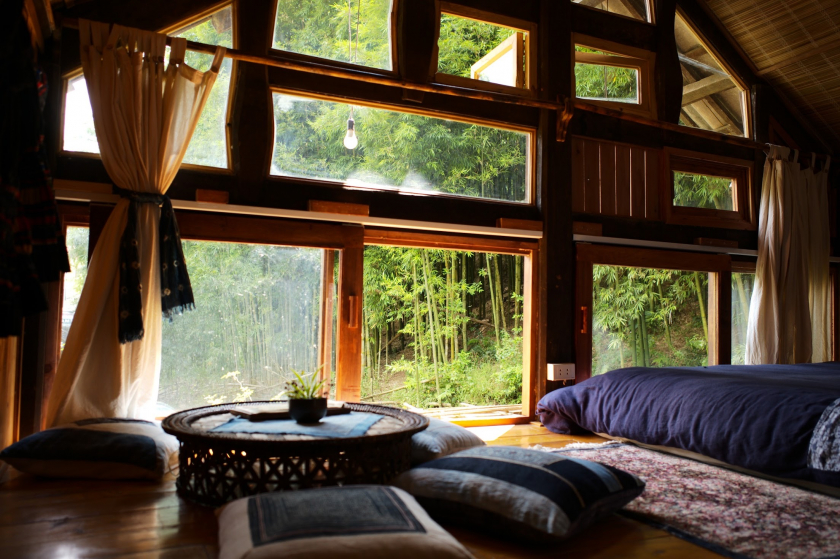
When the weather is sunny, the trees will be green and the room will become fresh.
Not only the attic, every room in the house has a large glass door: bedroom, living room, kitchen, and even bathroom, as if the homeowner wants to tell the people inside to look outside, to estimate each moment of time passing slowly, with all senses.
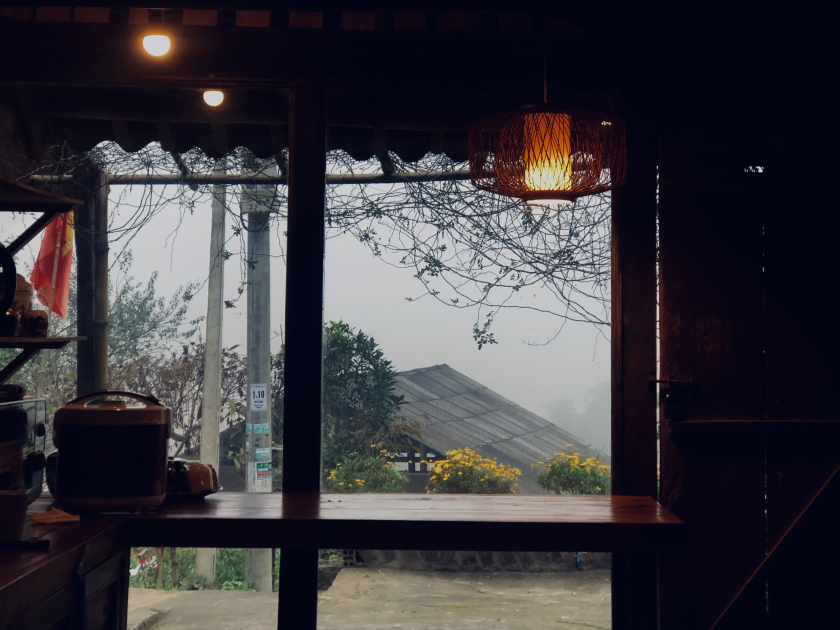
The sky was gloomy in the late afternoon.

No matter where we are in the house, we can see the outside view through the large glass windows.
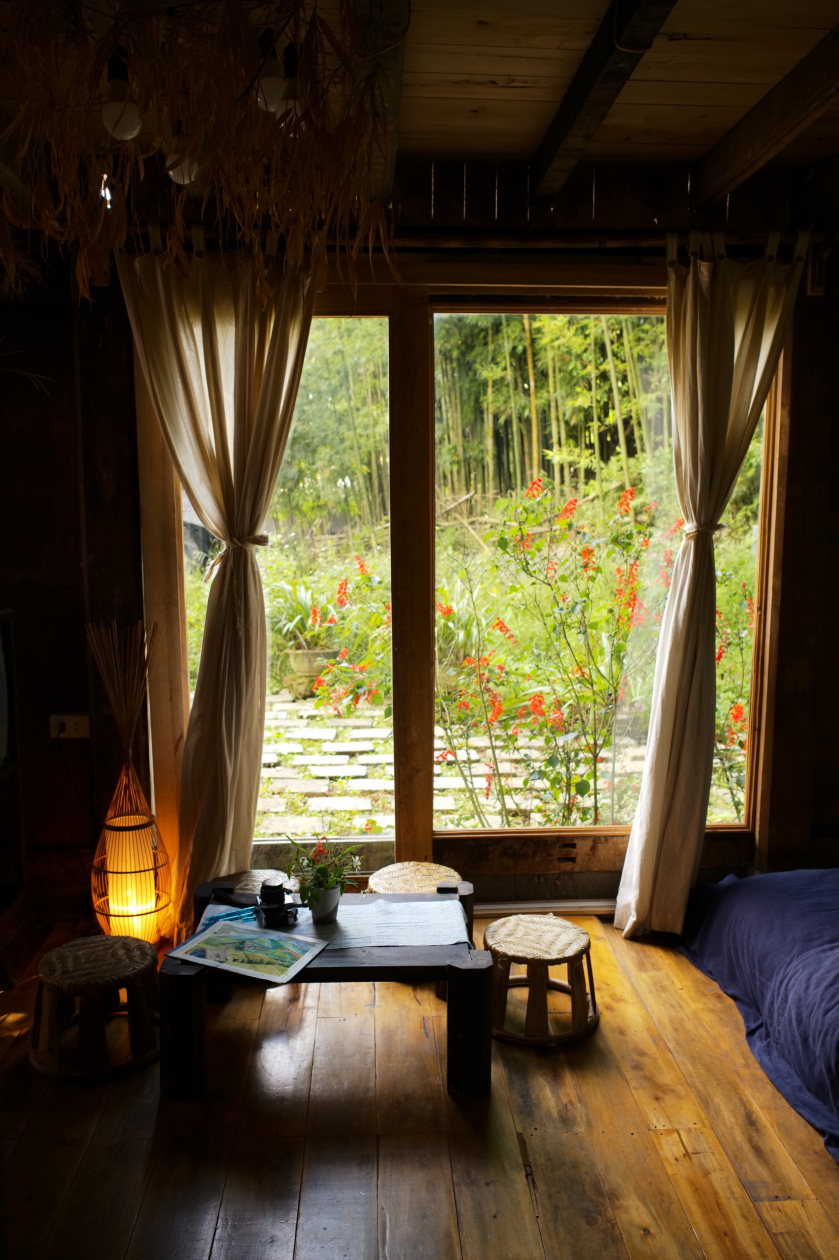
Large window in the first floor bedroom.
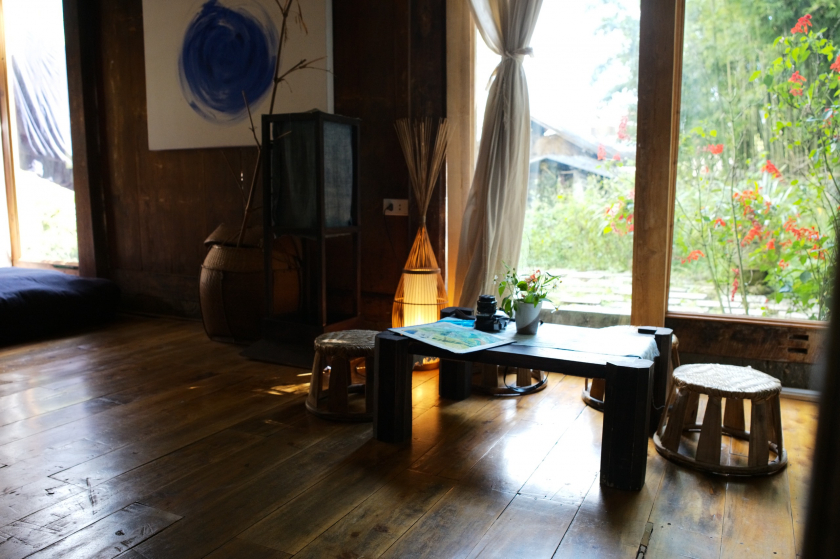
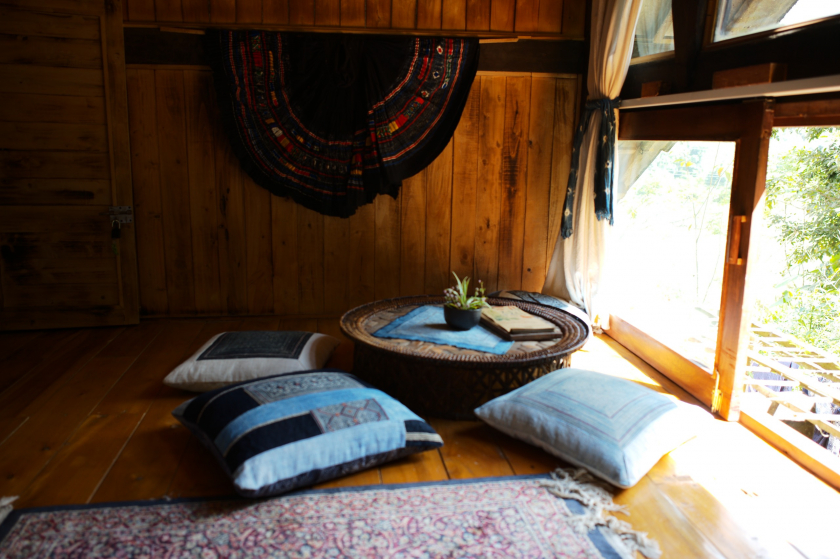
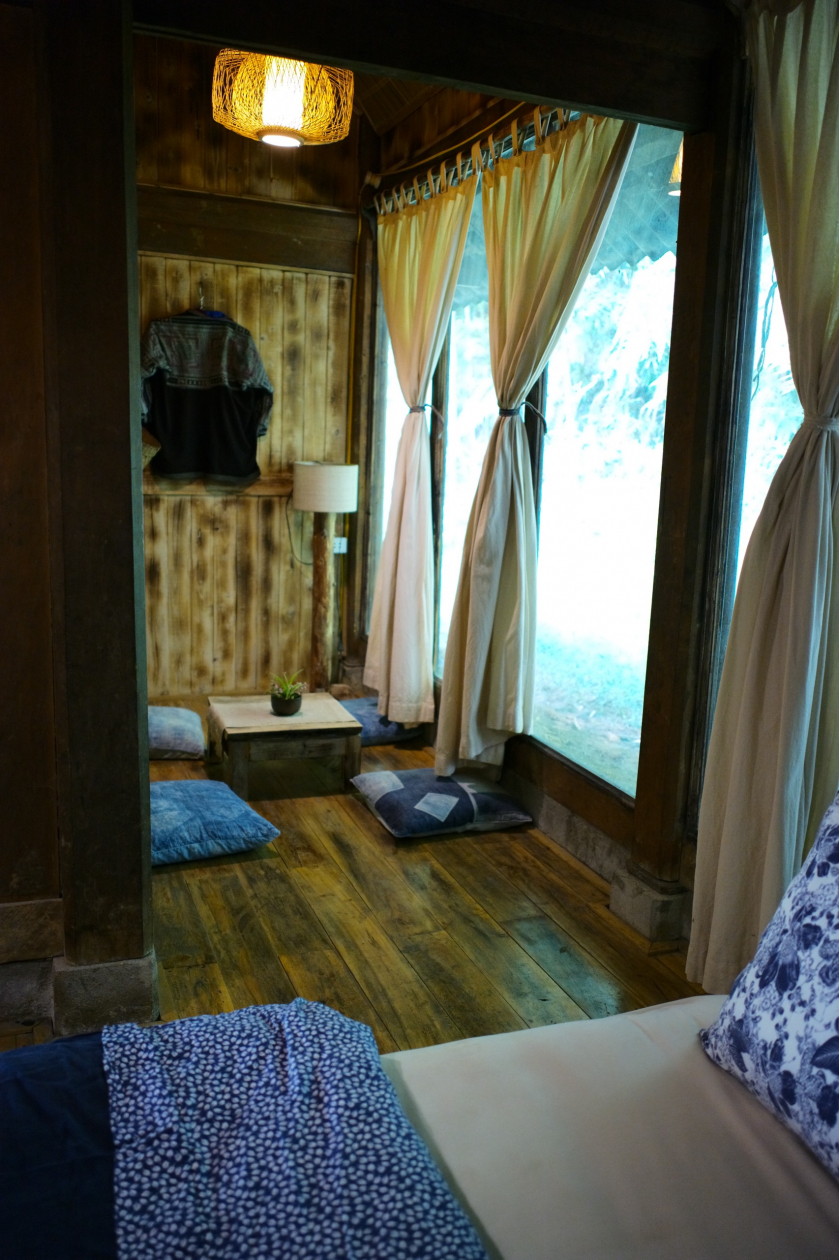
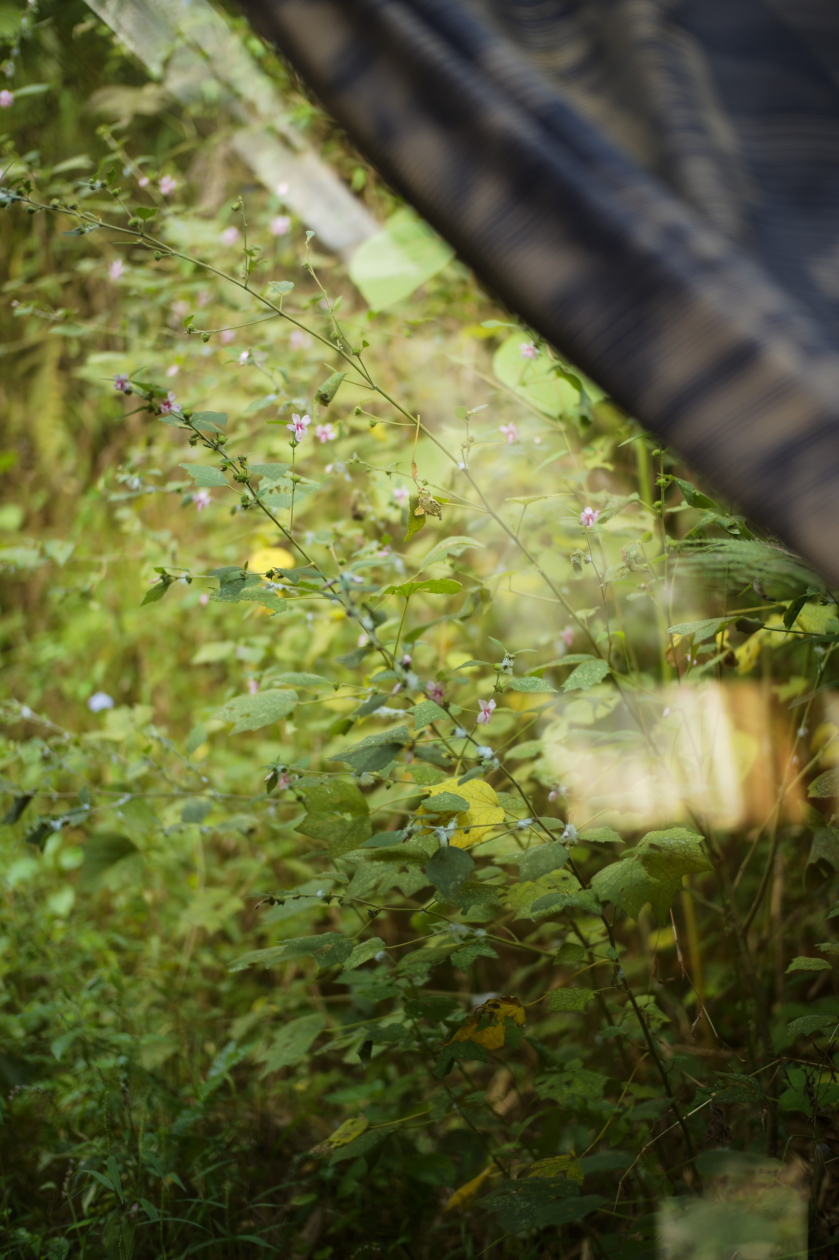
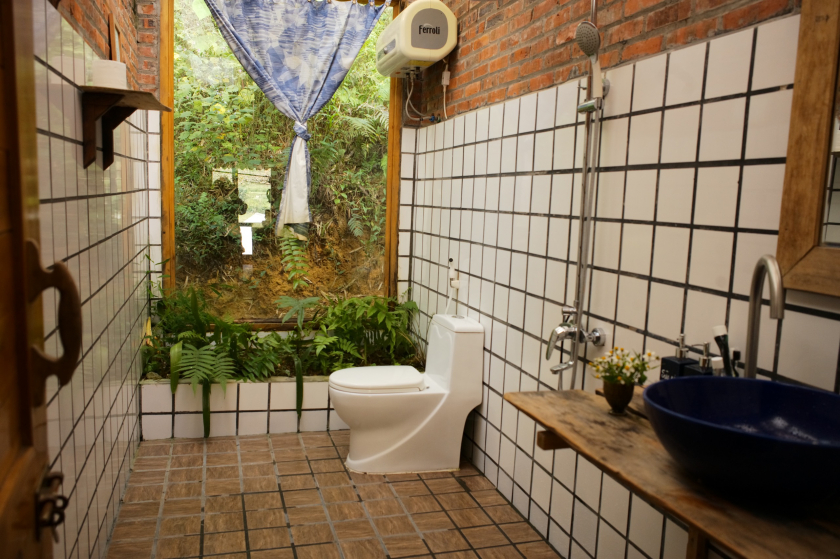
Glass door in the bathroom.
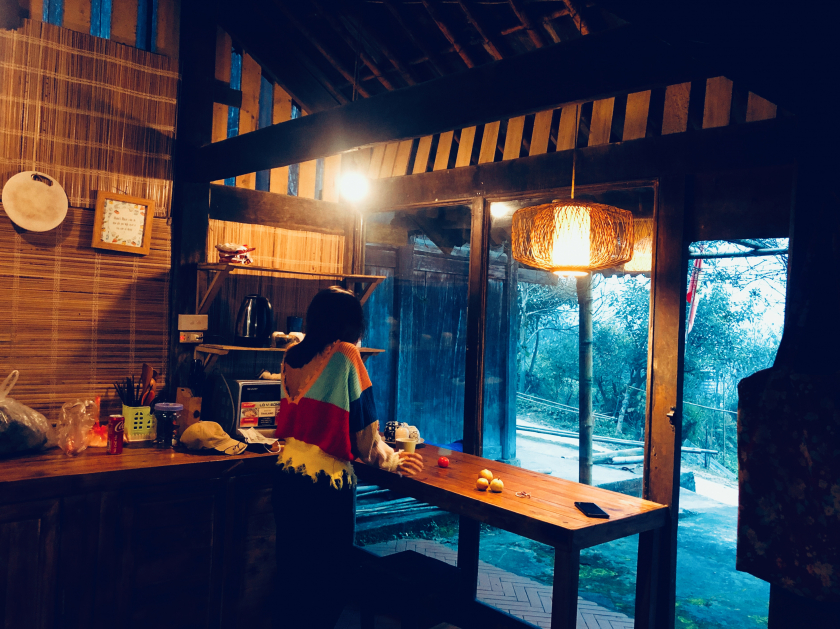


The view outside Pieu house, during our afternoon walk.
Cook - Eat - Clean - Cook
Every little detail in the house was arranged with a special intention. Not only did they install large glass windows, I also wondered why they designed such a large kitchen with two dining tables (not to mention two tea tables on the porch) in such a small space. I guess, perhaps for the Mong people, the kitchen must always be placed in the middle of the house, in the most solemn position, the most cozy place. The kitchen lights are invested in three types of light bulbs, suitable for each time of day. Therefore, when entering the kitchen, you always feel warm. From any position in the house, you can see the kitchen, so the two of us, no matter who is cooking, can still chat with the other. The best thing is when the two of us are busy in the kitchen, looking up and down, the sky has just gotten light but it is already dark, the mist has fallen outside the door, while inside the house, the kettle is boiling, light smoke is rising, and a cup of chrysanthemum tea is placed next to it. A cycle of cooking, eating, and cleaning up repeats itself throughout the day. It turns out that the kitchen is big, and it is meant to affirm that many simple things can bring people together in a calm and connected way.
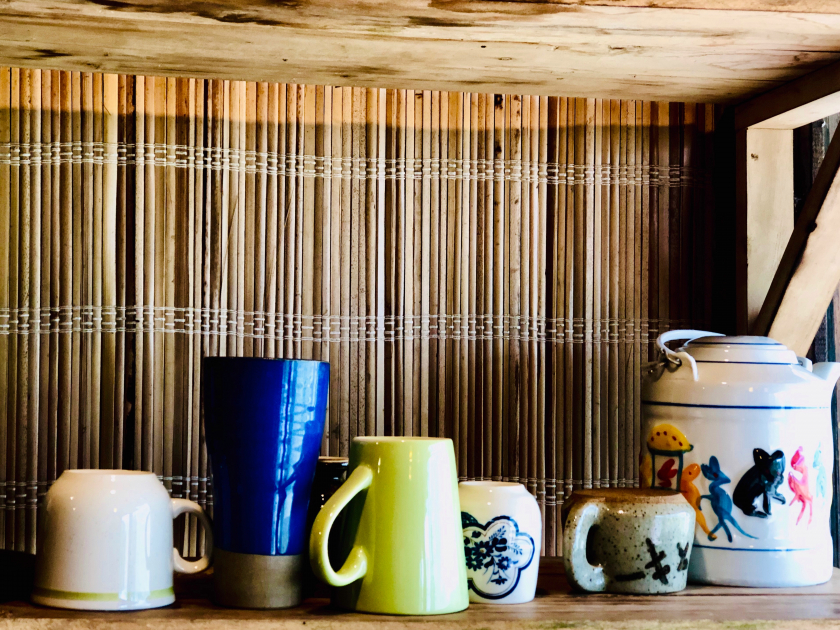
Pieu always had two things on hand: seasonal flowers and tea bags. We often took advantage of both, going out to the garden to pick chrysanthemums to go with our tea.
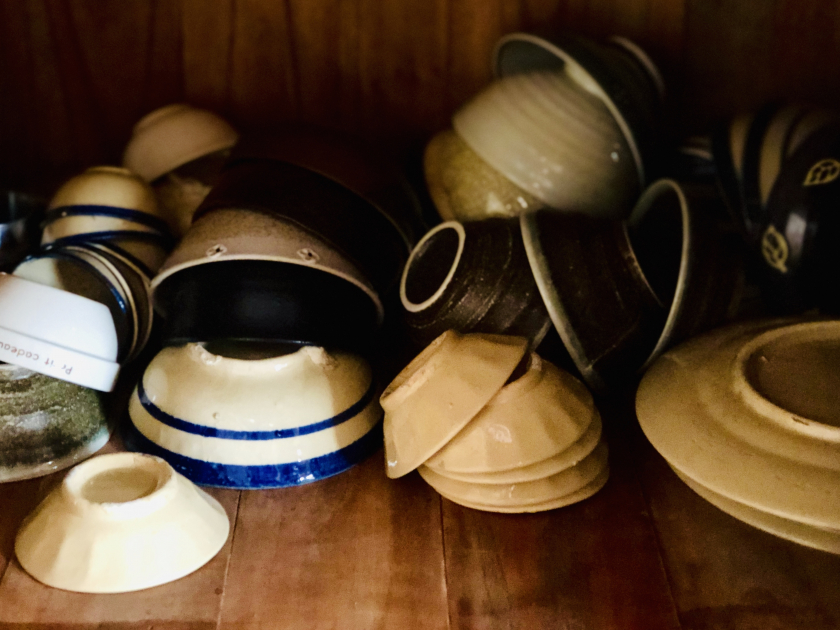
One third of the dishes in the house.

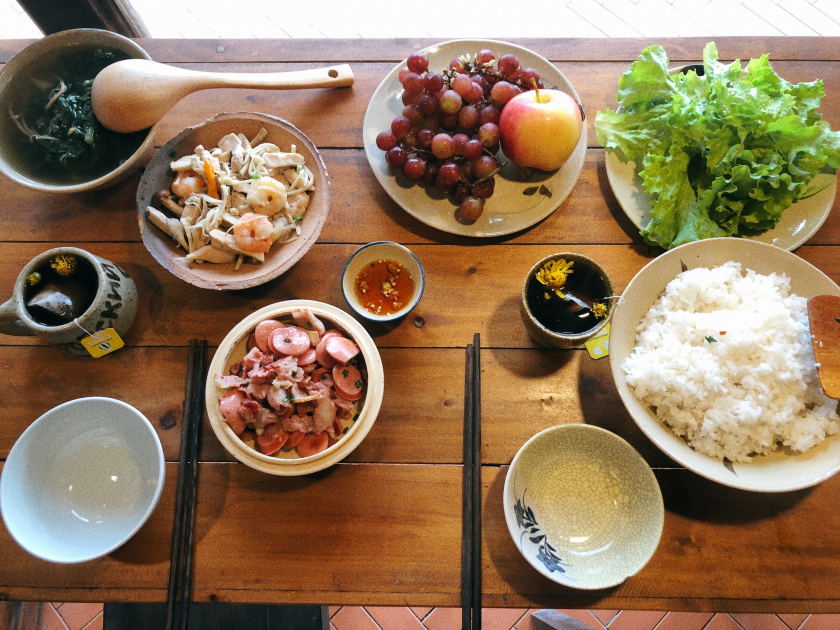
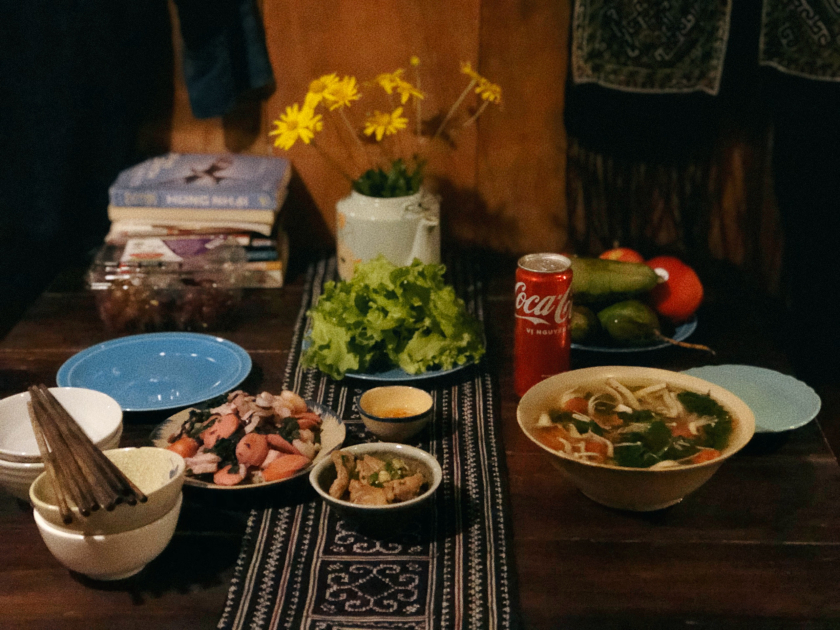
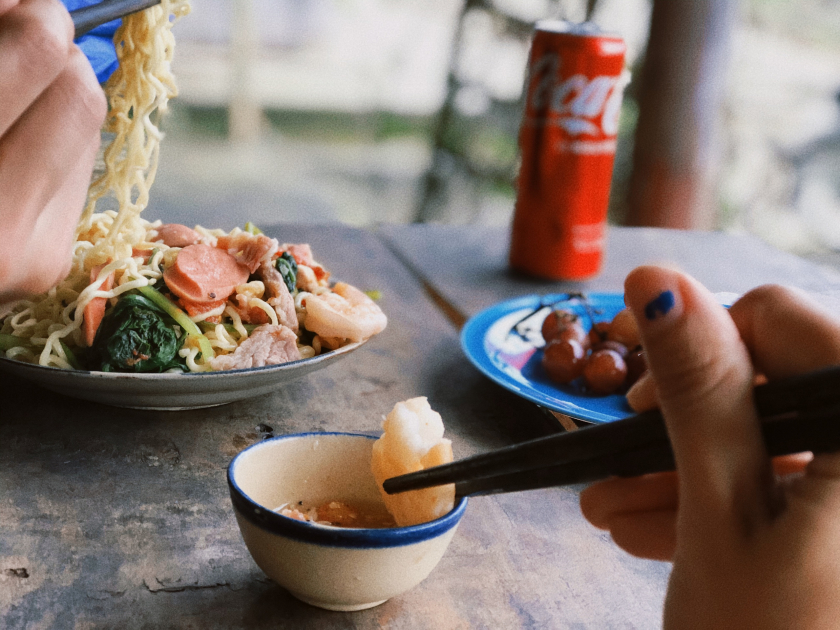
Every meal is a pleasure.
From Pieu house to Hau Thao is not far. We took a few hours during the day to visit the old house where we used to live. At this point, Muong Hoa stream is much gentler, the water is blue, and the flow is slow. But if it is not a sunny day, traveling will be very difficult, and camping by the stream is also not feasible.
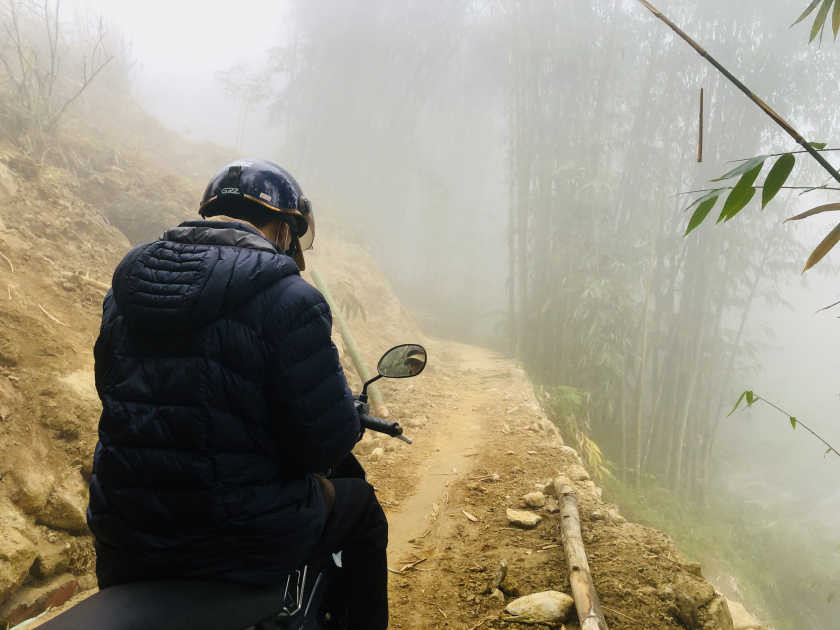
Road to Hou Thao, 2 pm.
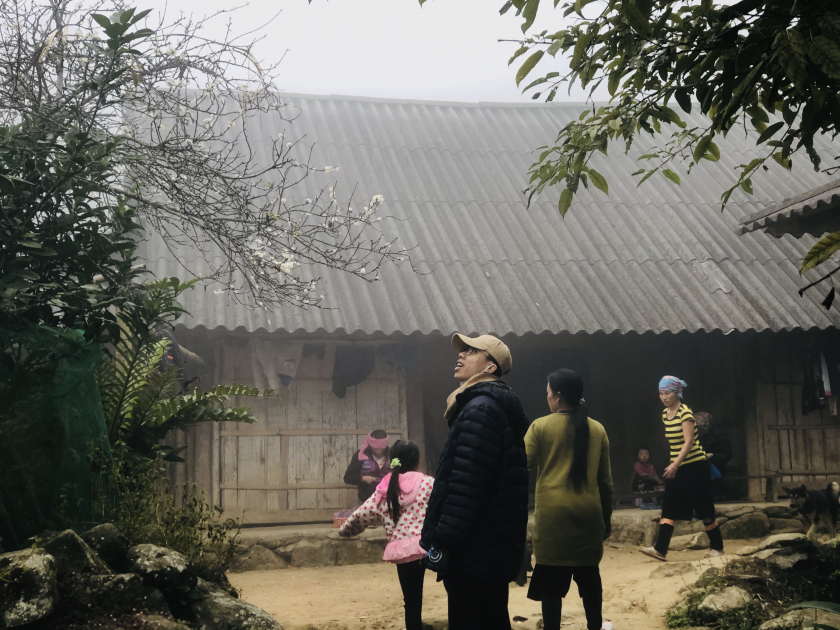
Plum and peach blossoms begin to bloom, signaling spring.
We stayed at Pieu house until early afternoon the next day, even though the owner allowed early check-in (from 7am the previous day) and late check-out (until around 7pm the following day). During our stay, except for the time the housekeeper handed over the room, checked in and sent breakfast, the space was ours alone. From Ta Van back to town, it was raining quite heavily, we could no longer see anything around, except for the short road ahead. I thought to myself: “So this year, we won’t be able to take any photos on the way back. Luckily, we already know where we have to go next year.”
More information
Pieu House room rates: from 450,000 to 1.3 million per night
Contact phone number: 0778902934






